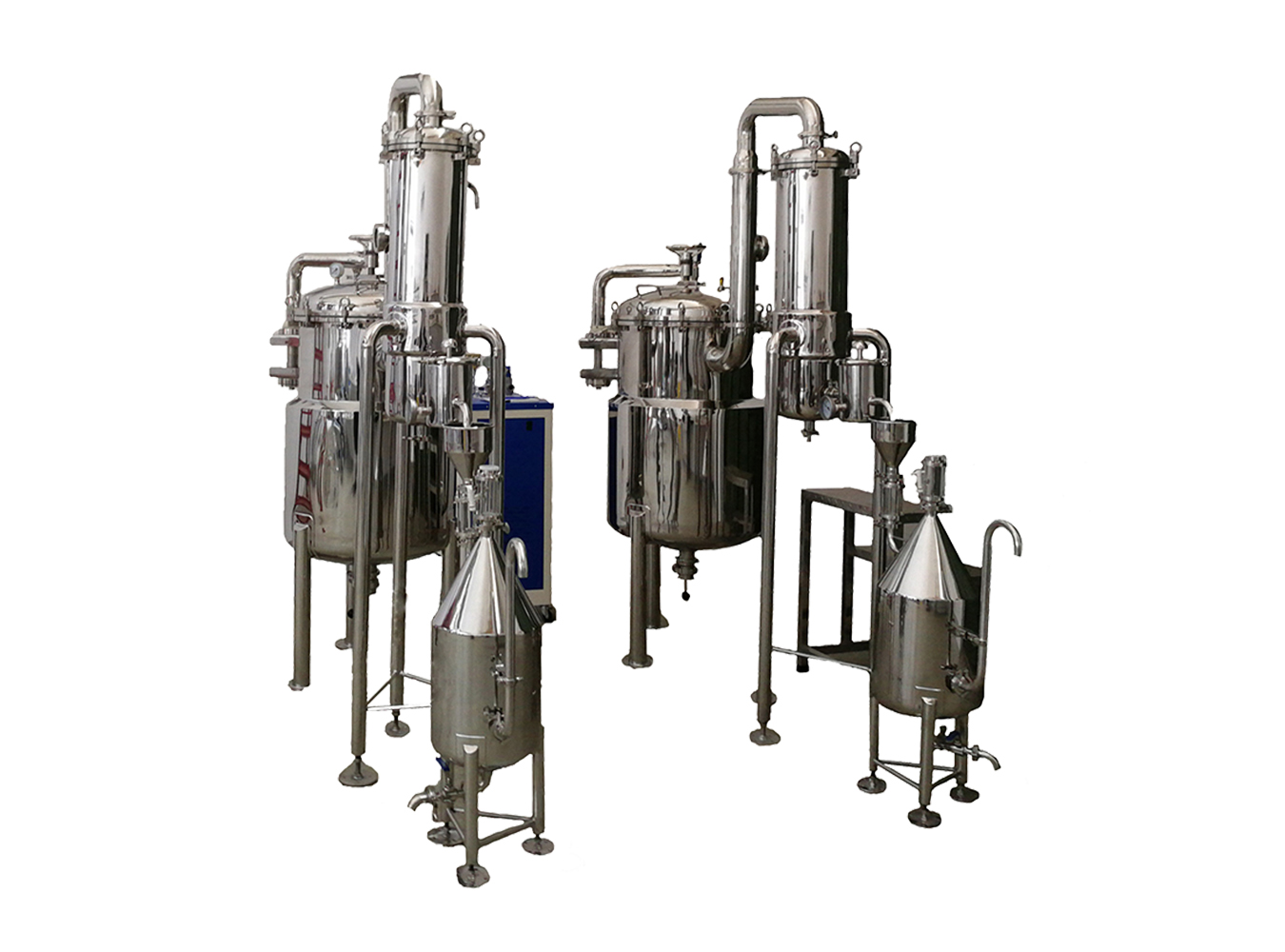Squeezing method of essential oil extraction method
First in Sicily in southern Italy, the farmer picked citrus fruits, turned the peel (the white side facing outward), wrapped it in a sponge, squeezed it hard, the oil spots ruptured to release the essence, and then squeezed the sponge. Citrus essential oils are available. Later, a steel brush was used to rub the peel and destroy the storage cells, but now they are all pressed with a machine: in Morocco, citrus essential oils are extracted from the juice.
The pressing method does not undergo high temperature and high pressure, and the oxidation is reduced to a minimum. The obtained essence, smell and composition are closest to the original plant state. In addition to volatile components, it also contains non-volatile components. For example, tocopherols, flavonoids, monoterpenes, sesquiterpenes, fatty acids, furanocoumarins, rich in ingredients, sweet smell.
The distillation method of essential oil extraction method


The distillation method is divided into three parts: distillation tank, cooling tank, and separation drum.
In the 18th century, the method of distillation was to heat directly on the fire, which was easy to scorch and caused great damage to the aromatic plants. Since the 19th century, in addition to the use of fire, water was added. There is a lot of loss of species (floral aromas use circulating water distillation to retain the aromatic molecules of esters); later it progresses to the steam pipe at the bottom and the plant at the top. The hot steam passes upwards through the plant body, and after destroying the storage cells, it carries aromatic molecules. The water vapor enters the cooling tank that is continuously injected with condensate, and the curved twist-shaped cooling pipe can extend the cooling time.
The distillation method can obtain essential oils and flower lotions. After standing to separate, the upper layer can get the essential oils and the lower layer is pure dew.
Distillation method began to be used in large-scale industrial production in the 19th century, and modern distillation equipment is various. After the plants are picked, they must be dried and compacted before they can be placed in the distillation tank. Among them, the quality of water will affect the distilled products (because water converts and records energy), and temperature and pressure control are very important. Too high temperature and high pressure will cause plants to be “frightened” and the distilled oil will be more unstable; When sorting delicate plants, in addition to maintaining low pressure, the temperature will also be controlled below 90 degrees Celsius. The distilled plants can be reused as compost or burned.
The pure dew that has just been distilled will have fine slag (remains in the cooling cylinder, which is usually not cleaned by the farmer, and is not harmful), and is in a turbid state, containing traces of aromatic molecules. Provence belongs to refined agriculture, usually farmers grow plants and arrange them by themselves, and the scale is small; while in Madagascar, the weather is cloudy and rainy, the plants are dried indoors and the distillation equipment in the wild looks rough, but the quality is not bad. There are many “mobile” distillation equipment in other parts of Europe, such as Hungary and Morocco. We should establish a concept: Essential oils and hydrosols are originally “agricultural products”. They are not industrialized products manufactured in sterile equipment workshops. Do not demand these products from the perspective of “cleanliness”.
Essential oil extraction method
Circulating water distillation method of essential oil extraction method
The rose distilleries located in Bulgaria, Turkey, and Morocco mostly use the “circulating water distillation method” to extract rose essential oil. The distillation method is to dry the rose petals in the shade and stir to ferment them to produce more phenethyl alcohol (with strong aroma). Some large-scale distillation plants in Turkey will bag them and convey them to the factory building and pour them into the distillation tank. The distillation method is divided into three steps:
The first stage: the petals are soaked in water and slowly sorted for four hours (hot steam will destroy the fragile petals), and 1/3 of the output of essential oil will be obtained, the oil extraction rate is low, and the esters contained in it will be lost in the water. Condense as much as possible to obtain more aromatic molecules.
Second stage: continue distillation for two hours, and obtain 1/3 of the output.
The third stage: inject (recover) the rose pure dew produced by the distillation before it is distilled for two to three hours. Since pure dew contains aromatic molecules, it must be reused and concentrated as much as possible to obtain more aromatic molecules. The whole process takes eight to nine hours. Morocco’s rose distillery is smaller than Turkey, and only starts during the rose production period.
Osmotic distillation method of essential oil extraction method
The physical phenomenon of hot steam runs from bottom to top, but the osmotic distillation method uses pressure to force the steam to penetrate the plant body from top to bottom. Other cooling and separation procedures are the same as general distillation. The advantage of the osmotic distillation method is that the steam flow rate is relatively slow, and the plants are fully permeated from top to bottom to make them evenly heated. The aromatic molecules can be completely extracted and the quality is finer. The extraction time and extraction rate of the distillation method will affect the price of essential oils. The price of low extraction rate is high, and the price of long-term distillation is also high.
Extraction rate reference: smoked Luxiang 0.15%, winter savory 0.5%, real lavender 12%, capsicum lavender 3%, eye-catching lavender 15-30%. The oil extraction rate of the same varieties of plants in different producing areas is also different.
Distillation time reference: woody (including roots and seeds), it takes 10-12 hours; Atlantic cedar, 10 hours; celery seed for seeds up to 24 hours; herb distillation time is about one hour.
